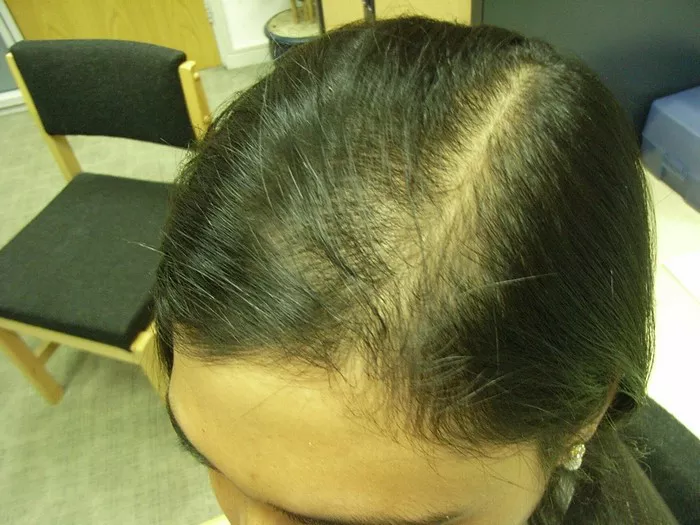Few things are more disheartening than stepping out of the shower, only to find a significant amount of hair tangled in your fingers. If you’ve ever wondered, “Why does my hair fall out when wet?” you’re not alone. This common concern has various potential causes, ranging from normal shedding to underlying health issues. In this article, we’ll explore the reasons behind wet hair shedding and offer insights into how to manage and prevent excessive hair loss.
Understanding the Hair Growth Cycle
Before diving into the reasons why hair falls out when wet, it’s essential to grasp the basics of the hair growth cycle. Hair goes through three main phases: anagen (growth), catagen (transition), and telogen (resting). Each hair follicle operates independently, so different hairs are at different stages of the cycle at any given time.
During the telogen phase, hair is in a resting state, and it eventually falls out to make way for new growth. It’s normal to lose around 50 to 100 hairs per day, whether wet or dry, as part of the natural shedding process.
Normal Shedding vs. Excessive Hair Loss
It’s crucial to differentiate between normal shedding and excessive hair loss. When your hair is wet, it might seem like you’re losing more strands than usual due to the clumping effect of wet hair. However, if you’re consistently experiencing a substantial amount of hair loss every time your hair gets wet, it could be a cause for concern.
Possible Causes of Excessive Hair Loss When Wet:
Weak Hair Structure: Wet hair is more prone to breakage, especially if your hair is weakened by factors such as heat styling, chemical treatments, or excessive brushing. Brittle hair can snap easily when wet, leading to increased shedding.
Improper Detangling: If you’re not detangling your hair properly before washing, knots and tangles can worsen during the washing process. Aggressive combing or brushing of wet hair can lead to breakage and increased hair loss.
Overwashing: Washing your hair too frequently can strip it of natural oils, leading to dryness and increased vulnerability to breakage. Over time, this can contribute to excessive hair loss, particularly when wet.
Underlying Scalp Conditions: Certain scalp conditions, such as dermatitis or psoriasis, can weaken hair follicles, making them more prone to shedding when wet. If you suspect a scalp issue, consult with a dermatologist for proper diagnosis and treatment.
Hormonal Changes: Hormonal fluctuations, particularly during pregnancy, childbirth, or menopause, can influence the hair growth cycle. This may result in increased hair shedding, including when the hair is wet.
Nutritional Deficiencies: Inadequate intake of essential nutrients, such as vitamins and minerals, can impact hair health. A deficiency in nutrients crucial for hair strength and growth, such as iron and biotin, may contribute to increased hair loss.
Medical Conditions: Certain medical conditions, like thyroid disorders or alopecia areata, can lead to excessive hair loss. If you suspect an underlying health issue, it’s essential to consult with a healthcare professional for proper diagnosis and treatment.
Tips for Managing and Preventing Hair Loss When Wet:
Gentle Detangling: Before washing your hair, use a wide-tooth comb or a detangling brush to gently remove knots and tangles. This reduces the risk of breakage during the washing process.
Limit Heat Styling: Excessive use of heat styling tools, such as flat irons or curling irons, can weaken hair and make it more prone to breakage. Allow your hair to air-dry whenever possible and minimize the use of heat styling.
Use a Moisturizing Shampoo and Conditioner: Choose hair care products specifically formulated to hydrate and strengthen your hair. Moisturizing shampoos and conditioners can help reduce dryness and improve the overall health of your hair.
Avoid Overwashing: Resist the temptation to wash your hair daily. Washing two to three times a week allows your scalp to maintain its natural oils, promoting healthier and more resilient hair.
Nutrient-Rich Diet: Ensure you’re getting a well-balanced diet rich in vitamins and minerals essential for hair health. Consider incorporating foods like salmon, eggs, nuts, and leafy greens into your diet.
Regular Scalp Massages: Stimulate blood flow to the scalp by incorporating regular scalp massages into your routine. This can promote a healthier environment for hair growth.
Consult with Professionals: If you’re experiencing persistent and excessive hair loss, it’s advisable to consult with a dermatologist or healthcare professional. They can assess your specific situation, identify any underlying issues, and recommend appropriate treatment options.
See Also: What Medications Make You Lose Your Hair: All You Need To Know
Conclusion: Navigating the Path to Healthier Hair
While it’s normal to experience some hair shedding, especially when wet, consistent and excessive loss may indicate underlying issues. By understanding the potential causes and adopting healthy hair care practices, you can navigate the path to healthier, more resilient locks. If concerns persist, seeking guidance from professionals ensures a comprehensive approach to addressing any underlying factors contributing to hair loss when wet. Remember, a holistic approach to hair care encompasses both external practices and internal well-being, contributing to the overall health and vitality of your hair.


